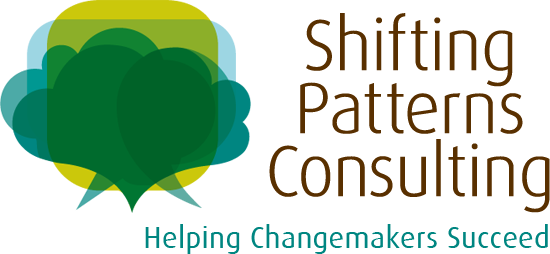While much attention is given to developing the business, technology, and leadership skills needed to succeed as a social entrepreneur, team building is less often touched upon. The irony is that it’s the quality of the relationships of the people we work with that ultimately determines our progress in generating social impact.
We recently had the chance to speak to Kimberley Jutze, Founder and Chief Change Architect at Shifting Patterns Consulting, about how her company helps social entrepreneurs and other changemaker leaders overcome the stumbling blocks that prevent effective collaboration.
Why is team building a critical and, yet, often overlooked skill for social entrepreneurs?
Although the dedication, perseverance, and sacrifice made by social entrepreneurs is worthy of admiration, this can lead to hero worship. The reality is that addressing the underlying causes of society’s most pressing problems is a team, not an individual effort. In fact, the bigger the change we seek, the more people we need to engage in our cause. When I think about social impact, I’m reminded of Reinhold Niebuhr’s quote: “Nothing we do, however virtuous, can be accomplished alone.”
Most social entrepreneurs understand the value of investing in technology to increase efficiency and productivity. However, few also make it a priority to invest in the improved performance and well-being of their teams. Just as we maintain IT systems to prevent them from breaking down the same is also true for human systems. This continuous investment requires making sure that teams not only have the resources needed to accomplish their tasks, but also the structure, work processes, and relationships that can make the best use of these resources. With effective solutions to social, economic, and environmental challenges so urgently needed, we can’t afford to neglect the collaborative effort that is essential for catalyzing these solutions.
What are the biggest challenges that typically get in the way of effective teamwork?
One reason why most teams struggle to achieve their goals is that they don’t consistently use systems thinking, which is seeing beyond isolated events to identify deeper patterns. Another reason is not putting a system in place to effectively support each other. These challenges are typically manifested in a variety of ways, such as an unclear purpose, uncertainty about what is expected of ourselves and other team members, important decisions not being made, interpersonal conflict, lack of accountability, and not giving enough attention to assessing the impact of team efforts. While it’s common for teams to experience bumps as they work towards their social impact goals, what separates those who overcome these obstacles from those who remain stuck is knowing when they are off course and supporting each other to get back on track.
What advice do you have for helping virtual teams improve teamwork?
Collaborating in a virtual environment is especially challenging. Since most communication takes place non-verbally it’s important for team members to meet in person, at least periodically. Although nothing can replace being in the same room with your colleagues, video conferencing is the next best thing. Nowadays there are a number of free or low-cost options, like Skype or Google Hangout.
Regardless of whether meetings take place in person or virtually, it’s also important to make time for team members to get to know each other. Trust, which is essential for effective teamwork, can only be established by getting to know each other. If there isn’t a tight schedule, encourage team members to get to know each other through informal conversations before or after meetings. Even with a packed agenda, it’s possible to take a couple of minutes at the beginning of a meeting to ask how everyone is doing or perhaps even an icebreaker question, like which social entrepreneur do you most admire?
What was your most memorable experience working with a team that was struggling to achieve social impact?
My most memorable team building experience occurred when I facilitated a workshop for a nonprofit leadership team that works closely with social entrepreneurs. This experience helped them better understand their own and their colleagues’ default styles for giving and receiving support. To build on this understanding each person took a turn asking another member of the team for support to address a problem they were having. The team realized that the benefits of asking each other for support extended beyond the process of asking for help. It also created the space for important conversations that were not taking place. As a result, the leadership team agreed to meet each week specifically to ask each other for support which continues to this day. Some of the leaders also decided to incorporate asking for support into the teams they manage.
How can social entrepreneurs get help to address collaboration challenges?
I’ve found that there is a benefit to working with an organization development consultant to address challenges related to forming a new team or improving the performance of an existing team. Not only is it useful to have the support of someone who understands team dynamics, but there is an added benefit of an outsider’s perspective. Oftentimes when we’re in the midst of a problem it’s hard to view it objectively. It can also difficult to be open to the perspectives of our team members if we think we already know what the problem is and how to solve it.
My company works closely with social entrepreneurs, as well as nonprofit and socially responsible business leaders, to help them understand what’s really getting in the way of effective teamwork, build the skills to address these challenges, and put a system in place to maintain improved performance. In addition to offering consulting services, my company is launching a group coaching program that will begin in mid-September in Washington, DC for leaders who want to learn how to improve their team building skills. For more information about these services, check out: http://shifting-patterns.com/services/#teambuilding.
This interview was published by SEE Change Magazine on July 23, 2017.

